WinterÔÇÖs only just begun, but itÔÇÖs never too early for some nippy weather classics. Can it ever be ÔÇÿtoo cold to snowÔÇÖ? If youÔÇÖve worn a coat inside, will you ÔÇÿfeel the benefitÔÇÖ when you go outside?
We spoke to Dr Sylvia Knight, Head of Education at the Royal Meteorologist Society to answer six very important cold weather questions.
Is it ever ÔÇÿtoo coldÔÇÖ to snow?
ÔÇ£ItÔÇÖs never too cold to snow in the UK,ÔÇØ says Dr Sylvia Knight, Head of Education at the Royal Meteorologist Society, ÔÇ£but it can be elsewhere in the world.ÔÇØ
To get snow, there has to be enough water vapour in the air to make clouds, and it must be cold enough (0┬░C) that snowflakes will form and not melt as they fall through the atmosphere to the ground.
ÔÇ£It can be ÔÇÿtoo cold for snowÔÇÖ in the centre of large land masses, such as Eurasia, Antarctica or North America, where the wind has not encountered enough water that can easily evaporate.ÔÇØ
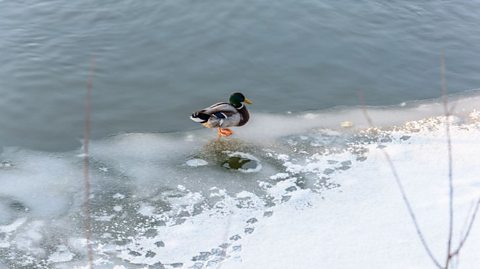
Water vapour might be picked up over the oceans, such as the North Atlantic or Arctic ocean.
ÔÇ£The rate of evaporation from lakes and rivers, which may be frozen, is far slower than from oceans,ÔÇØ Dr Sylvia says. ÔÇ£The oceans change temperature far more slowly than the land does, and so are a source of water vapour all year round compared to places where there is a lot of frozen water.ÔÇØ
In the UK, we commonly get snow when the wind is blowing from the north or north east (for example, from the Arctic or Siberia). This air is then warmed from below as it approaches the UK, and rises further when it hits the coasts, hills and mountains.
Once the air gets high enough, it cools again until it reaches the point where there is more condensation happening than evaporation - this makes clouds.
As the UK is surrounded by sea, there is always plenty of moisture in the air for cloud to form.
In short, itÔÇÖs not exactly ÔÇÿtoo coldÔÇÖ to snow in other places - itÔÇÖs too dry!
What is grit?
An age-old mystery: what is that stuff that gritters spray on the ground when it starts to get really cold? People on the road might complain about getting stuck behind the winter service vehicles, but the school run would be an even bigger nightmare without them.
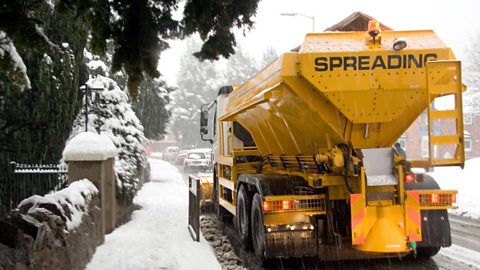
While itÔÇÖs called grit, most gritters actually use halite, also known as rock salt. But halite doesnÔÇÖt actually melt snow the way heat does.
Grit lowers the freezing point of moisture on the road surface, preventing snow from sticking in the first place.
The moisture on the road mixes with the salt and creates a saline solution preventing snow or ice from building up.
Technically you could use table salt to clear your driveway, but youÔÇÖd have to get the timing and conditions right before too much ice builds up. Salting your drive before itÔÇÖs too icy can help prevent slips and falls, but throwing salt at a pile of snow wonÔÇÖt work so well.
Table salt is not exactly the same as halite - itÔÇÖs refined for eating, so is treated to remove any impurities. Rock salt is already mined whole and does not undergo this process.
How does de-icer work?
There are many different solutions of windscreen fluid, but the key ingredient to typical de-icer is methanol. This can be in bottle form so you can de-ice a windscreen manually, or in the washer system of the car itself.
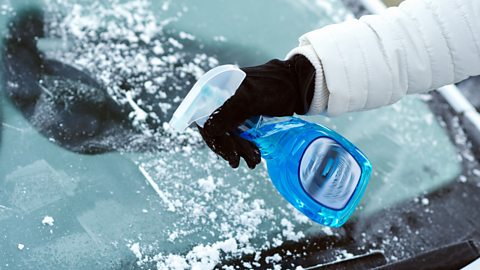
Methanol is a type of alcohol and is incredibly toxic to humans. It is diluted with water before it goes into the washer system, but it should definitely stay on the outside of the car and never be ingested.
Methanol freezes way below sub-zero temperatures, and, when mixed with water, creates a solution which lowers the freezing point of moisture already on the windscreen. Using only water to de-ice the windscreen is counterproductive as there will just be more moisture on the screen to freeze again.
Some cars have a washer system that heats the fluid before squirting it out. The methanol stops the warm water from freezing again on the windscreen. However, pouring boiling water over the windscreen can shatter the glass in cold conditions.
Some people use vinegar or rubbing alcohol as an alternative to methanol solution, as they both have lower freezing point than water and are effective glass cleaners.
The de-icer will always be more effective if you give the driver a hand in scraping their windows and windscreen first!

How do touch screen gloves work?
YouÔÇÖre out playing in the snow and you need to check the Bitesize website - but oh no! Your woolly gloves act like a barrier between you and your phone screen. You can always get touch screen gloves - but how do they work?
A capacitor is a device that has the ability to store electric charge. Most phones and tablets have capacitive touchscreens - screens that have an insulator that is coated in a conductive material.
Capacitors work by detecting anything that can store an electric charge. This includes you (think about when you rub your feet on the carpet and then get a static shock).
When your finger comes into contact with a touchscreen, you create an electrical circuit between your bodyÔÇÖs electrical field and the conductors in the screen. This ÔÇÿtellsÔÇÖ the conductors exactly where youÔÇÖre touching.
Touch screen gloves have conductive wire woven into the fingertips (usually copper yarn), which completes the circuit and allows the touch screen to detect your electrical field. Now you can stay warm and revise!

If you wear a coat inside, do you "ruin the benefit" outside?
Some people say you must take your coat off indoors, or you wonÔÇÖt feel the benefit when you go back outside. But is this true?
When you wear a coat, you insulate yourself. This makes it harder for infrared radiation (heat) to escape from your body and be lost to the atmosphere. However, that coat also insulates you from heat coming in.
ÔÇ£If you put a coat on when youÔÇÖve been inside for a while, you may get a bit warm, but youÔÇÖll be fine when you go outside and start slowly losing some of that extra warmth to the atmosphere,ÔÇØ says Dr Sylvia.
However, she says you should take your coat off indoors for another reason. If youÔÇÖve been outside for a long time with your coat on, and are chilly when you come in, then the coat is also cold and will need to warm up. YouÔÇÖll warm up far quicker without it on.

Should you starve a fever, feed a cold?
You might have heard the proverb, but is it true?
Not only is there conflicting evidence about the science behind it, but the linguistics of the proverb are also up for debate. Some linguists believe the saying might have been mistranslated, and instead it suggests that feeding a cold would ÔÇÿstave offÔÇÖ a fever.
While their symptoms are similar and they are both communicable viruses, colds and flu are quite different. Flu is characterised by a sudden fever, aches, pains and nausea, and avoiding rest can worsen symptoms and slow down recovery. Colds may make you feel lousy, but donÔÇÖt always stop you from your day-to-day tasks and the symptoms should start to go away in the second week.
Given that flu can last a week or so, you would definitely struggle to go that long without eating. The idea of starving a fever may just come from the fact that youÔÇÖre unlikely to have much of an appetite if you have flu.
What you shouldnÔÇÖt do is take antibiotics for either, as antibiotics fight against bacterial infections, they donÔÇÖt treat viruses. ItÔÇÖs best to keep your fluids up for either, avoid sneezing on your hands, and eat if you can stomach it!

Hair ice? Ice pancakes? Diamond dust? Here's the science behind these magical ice phenomena.
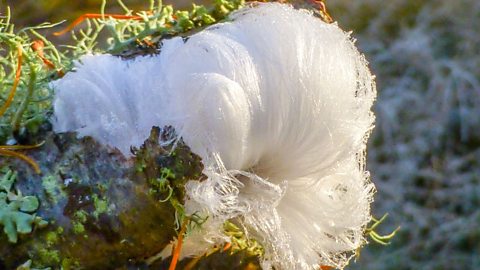
Why are all snowflakes unique?
The science behind making every drop of snow different.
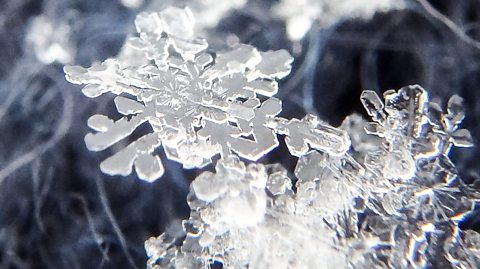
Why do we turn the clocks back?
It's not as scientific as you might think.
